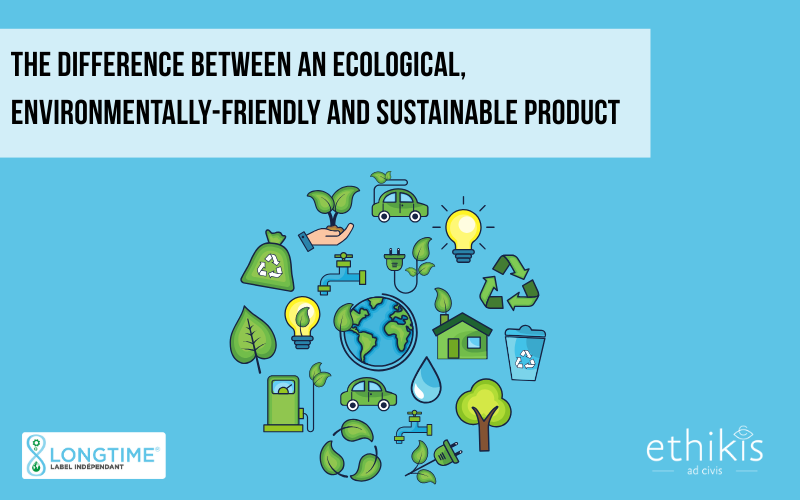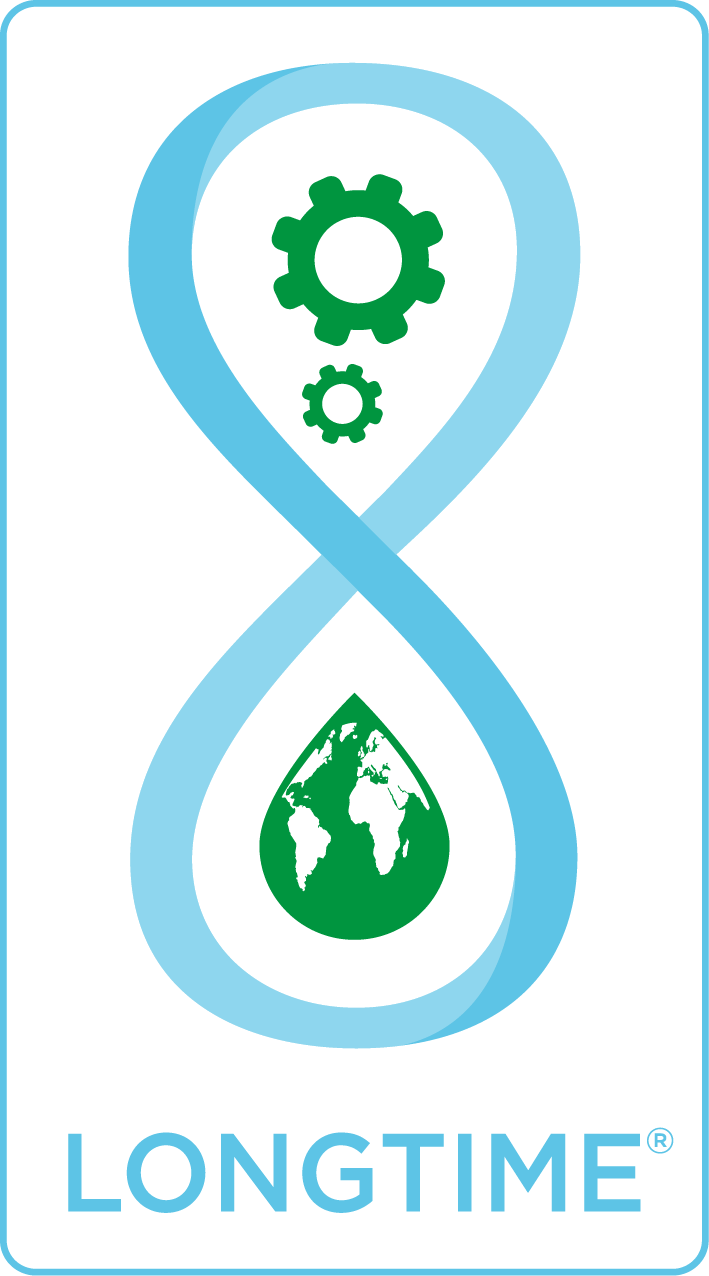
The difference between ecological, environmentally-friendly and sustainable products
Introduction: why these concepts are often confused and why it matters
The terms “ecological”, “environmentally friendly” and “sustainable” are often used interchangeably, particularly in marketing communications. Yet they refer to very different realities. These differences relate to overall environmental impact, product life cycle, natural resource management, greenhouse gas emissions and sustainable practices. Understanding these distinctions is essential to making informed choices, combating greenwashing and promoting a more responsible consumption model.
What is an eco-friendly product?
Definition and main criteria
A “green” good is designed to limit its negative impact on ecosystems, from manufacture to end-of-life. It meets precise criteria: low carbon footprint, reduced pollutant emissions, use of renewable or recycled raw materials, and absence of chemical substances harmful to health or biodiversity. This type of product is often part of an eco-design logic, with particular attention paid to the life cycle.
Concrete examples of environmentally-friendly products
- Household cleaners with biodegradable ingredients, free from endocrine disruptors.
- Clothes designed with organic or recycled fibers, in low-water consumption production circuits.
- Furniture made from FSC-certified wood, using formaldehyde-free, water-based glues.
What is an environmentally-friendly product?
Definition and main criteria
An environmentally-friendly product aims to reduce its environmental impact at every stage of its life: resource extraction, processing, transport, use and recycling. It is based on responsible practices: energy management, waste reduction, supply chain transparency, social ethics and compliance with environmental standards. The approach is systemic and integrated.
Concrete examples of environmentally-friendly products
- Des appareils électroménagers classés A+++ qui optimisent la consommation énergétique.
- Cosmetics with the cruelty-free label, whose ingredients come from fair trade sources.
- Compostable or refillable packaging, helping to reduce plastic waste.
How to tell the difference between an eco-friendly and an environmentally-friendly product
Ecological products focus on materials and direct non-toxicity, while environmentally-friendly products take a global view, including social practices, emissions reduction and resource management. and integration into a circular economy. A product can be ecological without being respectful of the environment as a whole – for example, a biodegradable item manufactured under unethical social conditions.
What is a sustainable product?
Definition of a sustainable product
A durable product is designed to last a long time, to resist wear and tear, and to be repairable and reusable.. The aim is to avoid rapid replacement, thereby reducing resource consumption and waste accumulation. Durability is based on the quality of materials, sturdiness, ease of maintenance and, in some cases, a high level of reliability. extended warranty.
How a sustainable product helps protect the environment
By reducing the frequency of replacement, a sustainable product limits waste, transport and production-related emissions. It encourages better use of natural resourcesreduces pressure on supply chains and lightens the overall carbon footprint. By extending life cycle, It optimizes the initial environmental investment.
Examples of sustainable products
- Shoes with replaceable soles and reinforced materials.
- Evolving furniture designed to accompany each stage of life (convertible cot, adjustable desk, etc.).
- Hand-held power tools with a 10-year guarantee and spare parts available.
Comparison: ecological, environmentally friendly, sustainable
What the three concepts have in common
These three approaches aim to improve environmental quality consumer products. They seek to reduce environmental impact, promote responsible management of raw materials, preserve resources and contribute to a virtuous circular economy.
Key differences to be aware of
- Ecological: focuses on non-toxicity, biodegradability and direct effects on the environment.
- Environmentally-friendly: integrating emissions, ethical production practices, social responsibility and traceability.
- Durable: focused on longevity, robustness, repairability and long-term resource savings.
Beware of environmental claims: between real commitment and greenwashing
Why “eco-friendly” or “respectful” without proof is now forbidden
Since 2023, European law requires that all environmental claims is based on verifiable elements. A brand can no longer use the terms “ecological” or “natural” without being able to prove the absence of toxic substances, the impact on the environment or the quality of the product. emissions, or respect for a sustainable life cycle. Failure to do so may result in penalties for misleading advertising.
How to verify that a claim is serious (labels, certifications, verifiable data)
Labels are essential to guarantee credibility an environmental promise. Among the most recognized:
- European Ecolabel, NF Environnement for household products.
- FSC for wood, GOTS for organic textiles.
- Energy Star for electronics.
A good product must be accompanied by verifiable data: life cycle analysis, carbon footprin, t, origin of materials, sustainable practices applied.
Transparency and professional diligence: a duty for brands
Companies have an obligation to be transparent and justify their commitments. This requires the publication of CSR reports, clear environmental criteria and the provision of performance indicators. The professional diligence means not misleading consumers about the environmental benefits of a product.
Demanding proof of sustainability: an essential reflex
To avoid greenwashing, the consumer must learn to look for concrete proof: warranty period, reparability, recognized labels, product sheet detailing the materials used, or documentation on emissions avoided, etc.. These elements reinforce the perceived quality and brand trust.
Why is it so important to distinguish between sustainable, ecological and environmentally-friendly products?
Choose according to your priorities and values
Each consumer may have different priorities: health, preservation of natural resources, etc.or the fight against climate change, or the desire to support socially responsible companies. Distinguishing between these concepts enables choices consistent with personal values.
Benefits for consumers (real impact)
A well-considered purchase, aligned with our convictions, generates a real positive impact: less waste, better quality goods, a reduced personal environmental footprint, and a contribution to a more sustainable consumption model.
Challenges for companies (transparency, loyalty)
Companies that clarify their positioning and act transparently gain the trust of their customers. This gives them leverage to loyalty, a better reputation and often a lasting competitive advantage.
Conclusion
Differentiating between ecological, environmentally-friendly and sustainable goods is more than just a semantic nuance: it’s an ecological and economic issue. major. To consume better, reduce our carbon footprint and support responsible practicesIt’s essential to understand the implications of each choice. Informed, consumers become agents of change, and companies are encouraged to be more rigorous, more convincing and more responsible.
